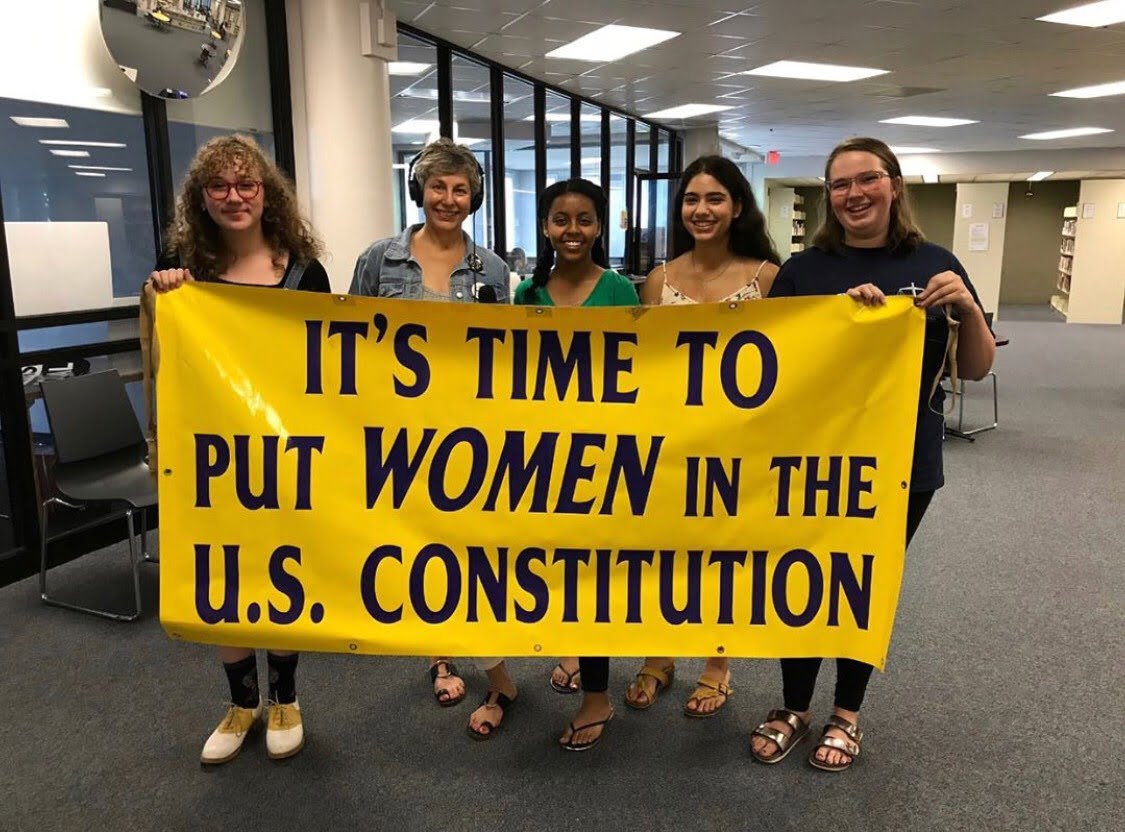By 2019, it should be a given that every citizen is granted equal legal rights, but not in the United States. The US Constitution does not explicitly guarantee equal footing for both sexes, but rather leaves the responsibility of passing gender discrimination laws to state governments. Out of all states and US territories, only 35 have adopted some form of comprehensive gender discrimination law. However, the Equal Rights Amendment (ERA) would ensure fundamental legal protection against gender discrimination for all sexes on a constitutional level. Activists from all over the country have been fighting for nearly a century to ratify the amendment, from phone banking to canvassing, yet the ERA has never been closer to ratification.
In order for a new amendment to be ratified, two-thirds of the states’ governments must pass it. Currently, the ERA has been ratified by 37 states and Virginia will likely be the 38 state. As of now, there are potentially 13 states that could pass the amendment and lead to its ratification, however, Virginia is the closest. The amendment has been approved by the Virginia State Senate but not in the House of Delegates. In February, the bill was voted on but was overturned by a slim margin of one vote. With all 100 House seats up for ballot in November, ERA activists are working harder than ever to ensure pro-ERA candidates win seats.
When it was first introduced in 1923, few people supported the amendment. Nearly four decades later, with the surge of second-wave feminism, the ERA was once again brought back into the limelight. In just a few years after gaining attention, 35 states had already ratified the bill; however, conservative backlash against the feminism movement eroded support for the ERA. It ultimately was unable to gain the last three states needed for ratification and the bill was left dormant. Fast forward to the past few years, the reignition of the #MeToo movement in 2017 has regenerated energy for the almost forgotten bill.
In today’s society, the ERA would have little effect on the everyday life of American women, but its ratification is still crucial. The cultural and societal value is akin to First Amendment freedoms. Being fundamentally equal in all aspects of identity should be a guaranteed right in a developed country like the US. For other women in the US, the ERA would provide legal protection in ways that would revolutionize gender-related court cases. From sexual harassment to murder cases, the ERA would turn the tide for female victims.
For example, in 1999, a father abducted his three daughters who were in the custody of their mother. Their mother, who previously obtained a restraining order against him, reported the incident to the police, who refused to intervene. A few hours later, the police discovered the father murdered his children. The mother sought to sue the county, and the case even made it to the Supreme Court under the name Town of Castle Rock v. Gonzales. However, the Court ruled that the 14th Amendment, which proclaims every citizen of the US is granted equal civil and legal rights, does not compel county officials to protect women against domestic violence, leading to the defendant’s victory.
With the ERA added to the Constitution, cases like Town of Castle Rock v. Gonzales can be tried justly. The amendment would require the government to intervene in cases of domestic abuse as a form of sex discrimination. This legal framework would have tipped the scale in favor of the mother in a case of blatant neglect from the county, allowing her to receive the justice she deserved. Providing fundamental legal backing is crucial to cases that can be interpreted as gender discrimination. While laws like Title IX, which prohibits discrimination on the basis of sex in any education program or activity that is federally funded, have been put in place, they only protect specific cases, and loopholes are exploited more often than not.
While many see the ERA as only advantageous to women, it also provides legal equity for men. In certain areas of law, like family law and paternity suits, men face gender discrimination. For instance, in cases of child custody, nearly 90% of the time the mother gains custody, many times due to internalized stereotypes. This unchecked bias is a form of gender discrimination, but without gender-neutral anti-discriminatory laws, cases go untried. With the ERA, men will be able to call upon the court system and possess a solid legal framework for their case. The amendment will finally grant men legal equality in areas that have historically favored women.
Many skeptics see the ERA as an unsettling attempt to introduce abortion rights into the Constitution. However, this is not the main focus of the ERA. In fact, reproductive rights are not mentioned at all in the mere 52 words of the amendment. Others claim the ERA is no longer necessary considering policies and laws placed by federal and state governments; however, laws can change depending on the current administration. This has already happened with the Violence Against Women Act, which was left to expire without the introduction of an alternative bill. Introducing the ERA into the Constitution would protect the equal rights of all citizens and have them permanently integrated into our society.
While the ERA may be viewed as redundant and no longer necessary when analyzed at a superficial level, many instances have proven that legal gender equality is still necessary. The nearly century-long struggle for ratification is coming to a close with only one more state needed before it can take effect. While the amendment has faced more backlash and adversary than ever before, one thing is clear: the Equal Rights Amendment is not a broken dream from the past but rather a reality worth fighting for.







































